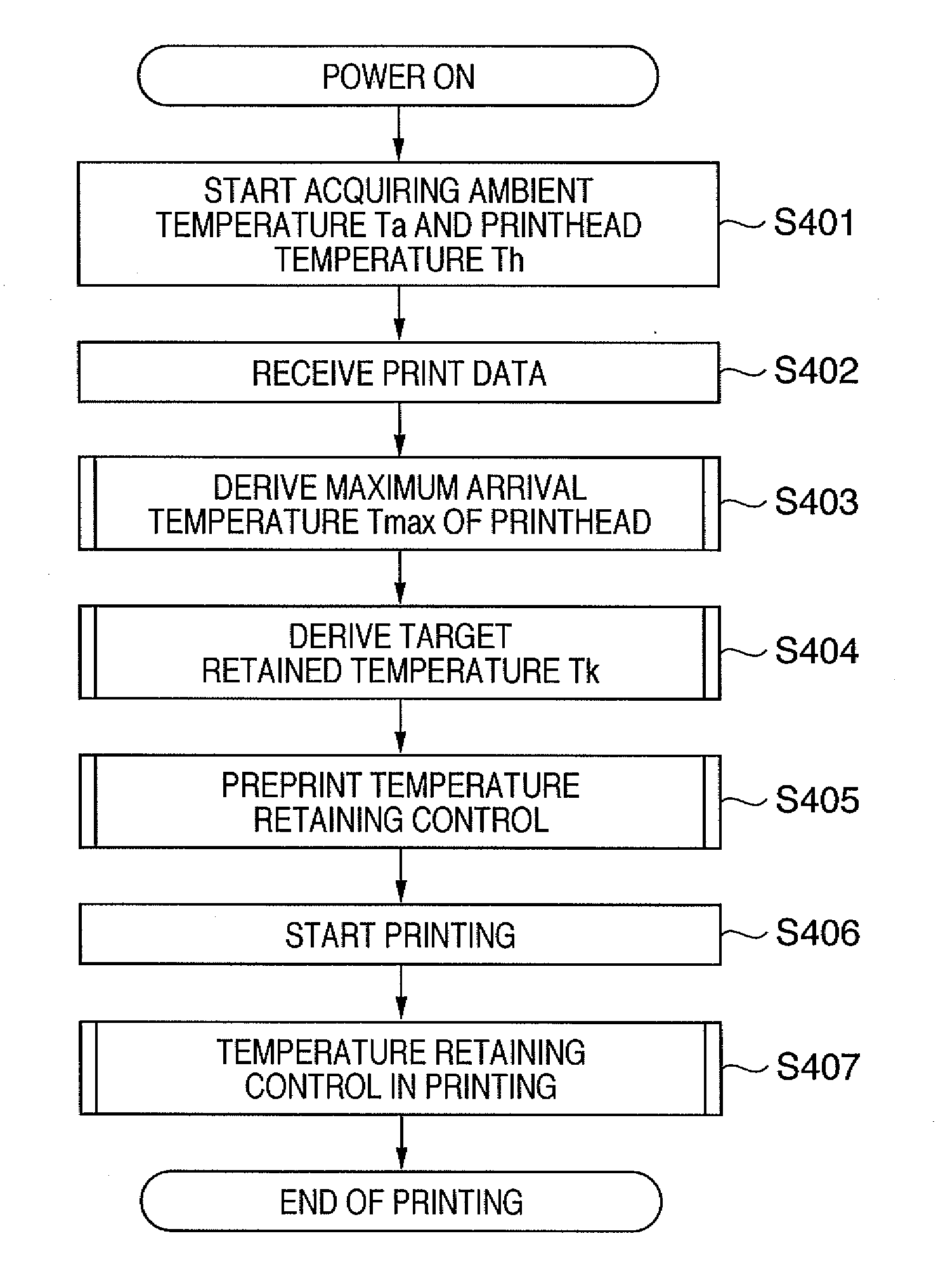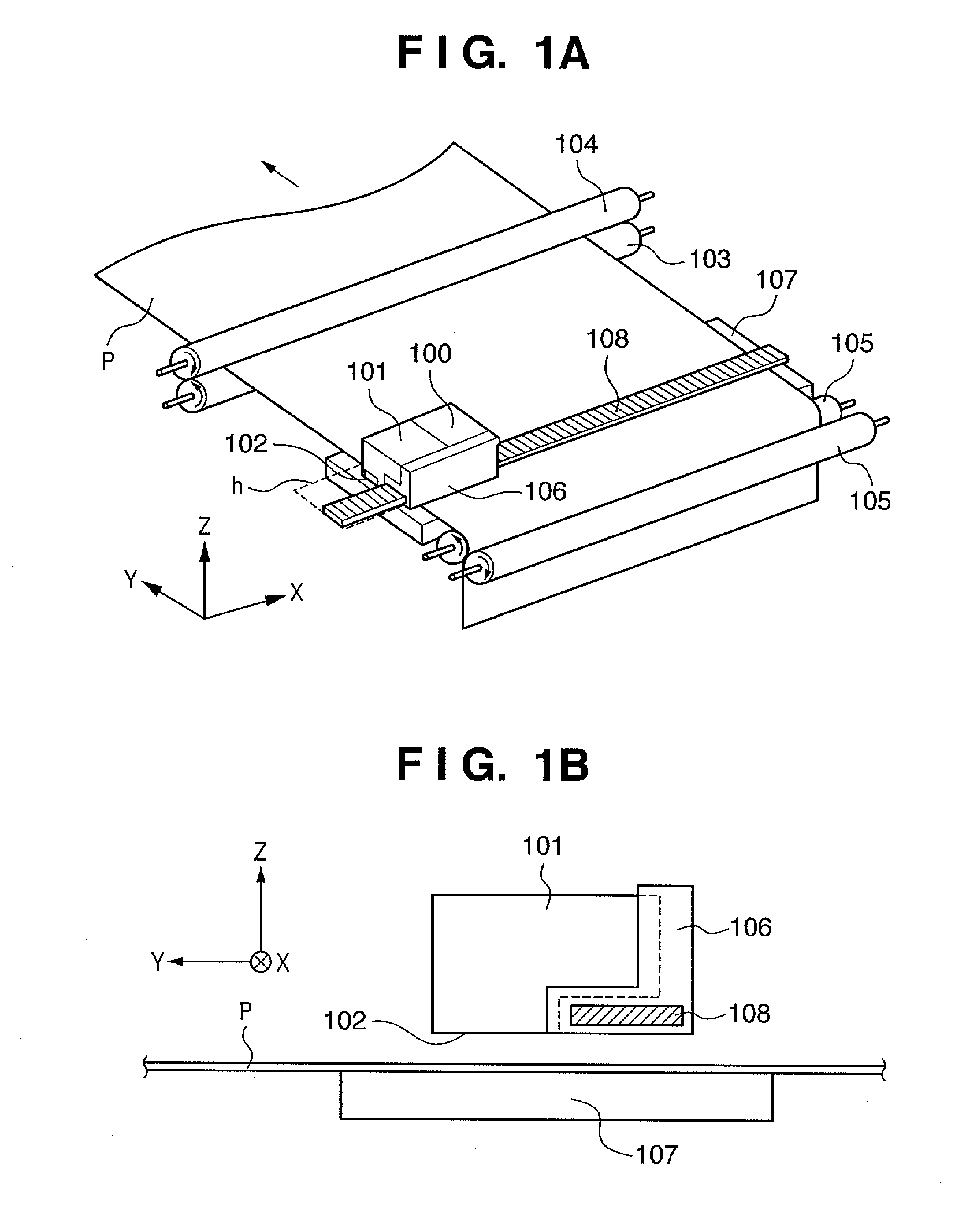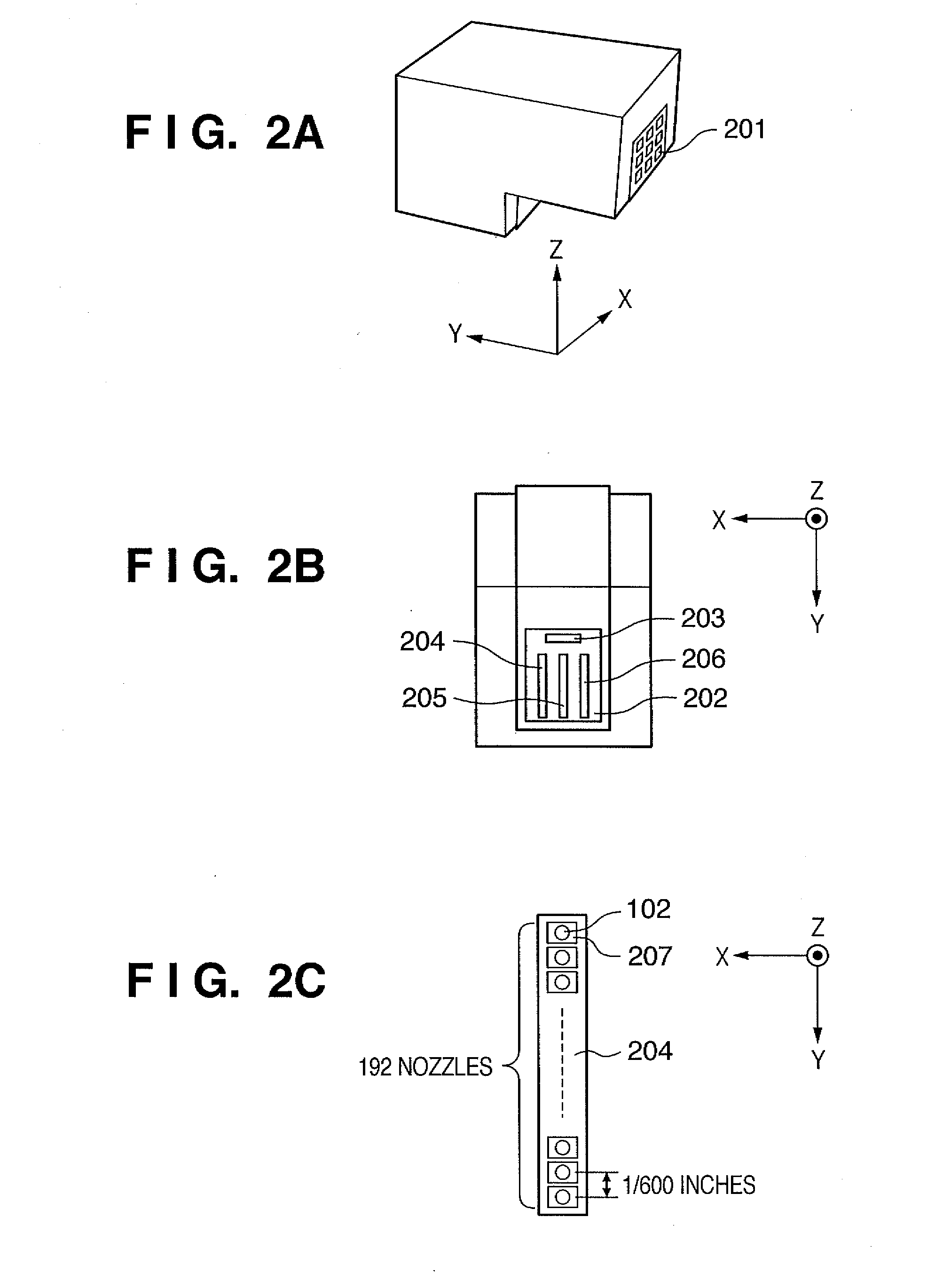Printing apparatus, printing system, printhead temperature retaining control method
- Summary
- Abstract
- Description
- Claims
- Application Information
AI Technical Summary
Benefits of technology
Problems solved by technology
Method used
Image
Examples
first embodiment
[0064]FIG. 4 is a flowchart showing an outline of a printhead temperature retaining control method according to the first embodiment.
[0065]When the printing apparatus is turned on, an ambient temperature Ta of a printing apparatus and a printhead temperature Th are acquired in step S401. In step S402, print data is received from an external device (host). Then, the process proceeds to step S403 to simulate the transition of the printhead temperature in actual printing from the received data and derive a maximum arrival temperature Tmax at that time.
[0066]In step S404, a target retained temperature Tk at which the printhead temperature is retained is determined in accordance with the maximum arrival temperature Tmax derived in step S403. In step S405, preprint temperature retaining control starts. If the printhead temperature reaches the target retained temperature, the process proceeds to step S406 to start printing. In step S407, printing is performed while temperature retaining co...
second embodiment
[0093]In the first embodiment, information on the print scanning count, the print time per print scanning, and the heater driving count per unit time for each print scanning is derived from print data, obtaining the maximum arrival temperature of the printhead. However, this control requires complicated calculation. Since the calculation is required to complete before the start of printing, this may decrease the throughput of the printing apparatus. In the first embodiment, since all print data are received before the start of printing, the data transfer time becomes long unless a large-capacity buffer is provided. To prevent a decrease in the throughput of the printing apparatus, a large-capacity memory is necessary, raising the cost of the printing apparatus.
[0094]Considering this, the second embodiment will describe a temperature retaining control method which can be performed without requiring any complicated calculation, unlike the first embodiment.
[0095]FIG. 10 is a flowchart ...
PUM
 Login to View More
Login to View More Abstract
Description
Claims
Application Information
 Login to View More
Login to View More - R&D
- Intellectual Property
- Life Sciences
- Materials
- Tech Scout
- Unparalleled Data Quality
- Higher Quality Content
- 60% Fewer Hallucinations
Browse by: Latest US Patents, China's latest patents, Technical Efficacy Thesaurus, Application Domain, Technology Topic, Popular Technical Reports.
© 2025 PatSnap. All rights reserved.Legal|Privacy policy|Modern Slavery Act Transparency Statement|Sitemap|About US| Contact US: help@patsnap.com



